Sutton Hoo: Anglo-Saxon replica ship project to start
- Published
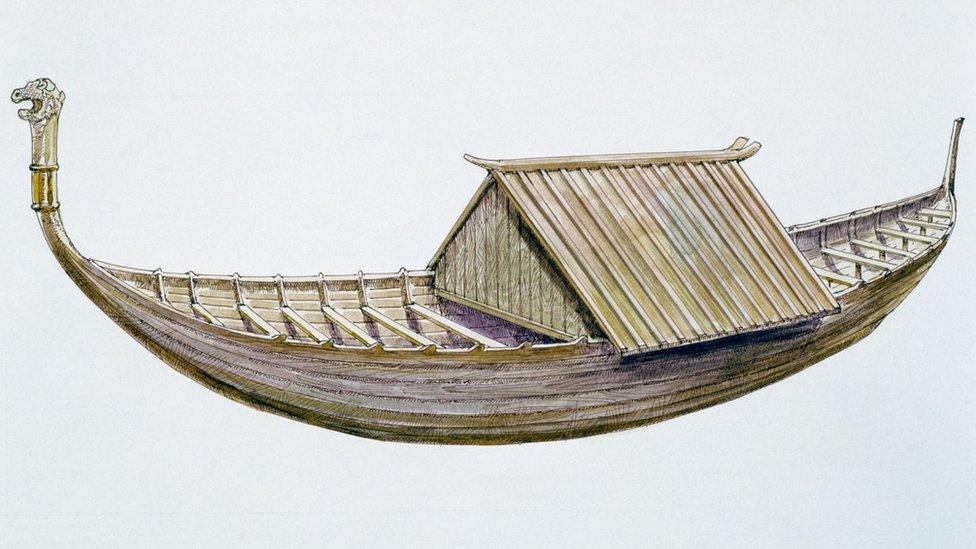
The burial mound is thought to be linked to the 7th Century King Raedwald of East Anglia
The first phase of a £90,000 project to build a replica of the Anglo-Saxon ship buried at Sutton Hoo is due to start.
The burial site, believed to be the final resting place of the 7th Century King Raedwald of East Anglia, was discovered in 1939 near Woodbridge, Suffolk.
Next week Woodbridge Riverside Trust, external takes on a boatshed which is to be fitted out to start work on the ship.
The reconstruction will measure about 90ft (27m) in length.
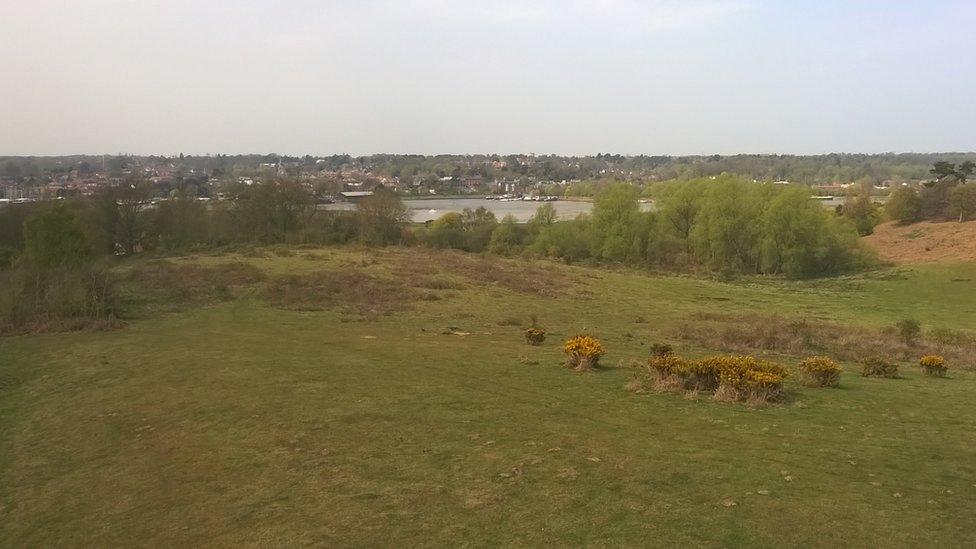
It is thought the ship was hauled to the Sutton Hoo site from the nearby River Deben
Bryan Knibbs, executive chairman of the trust, said the group aimed to use traditional skills to build the boat and would start with smaller vessels before going on to a replica of the Sutton Hoo ship.
"On 21 April, we will be having an open day to give the public an insight into our plans and to look inside the boatshed - called the Longshed - that has been talked about for so long," he said.
"Phase one of our operations will begin with the start of the fit-out, and construction of the first St Ayles skiff (a light rowing boat). This really is the very start of our major project."
He said if everything goes to plan, work on building the replica could start in September.
The project is aiming to raise £90,000 through donations, sponsorship and grants.

Sutton Hoo's history

One of the greatest finds at the Sutton Hoo boat burial is this warrior's helmet, which is kept at the British Museum in London
The discovery was made in 1939 when the landowner Edith Pretty asked archaeologist Basil Brown to investigate the largest of several mounds on her property
Among the many finds were the buried boat which contained the remains of a warrior's helmet, which is kept in the British Museum
It is thought the ship was hauled to the site from the nearby River Deben

- Published3 October 2017

- Published7 August 2017

- Published1 December 2016

- Published20 September 2016

- Published19 November 2015
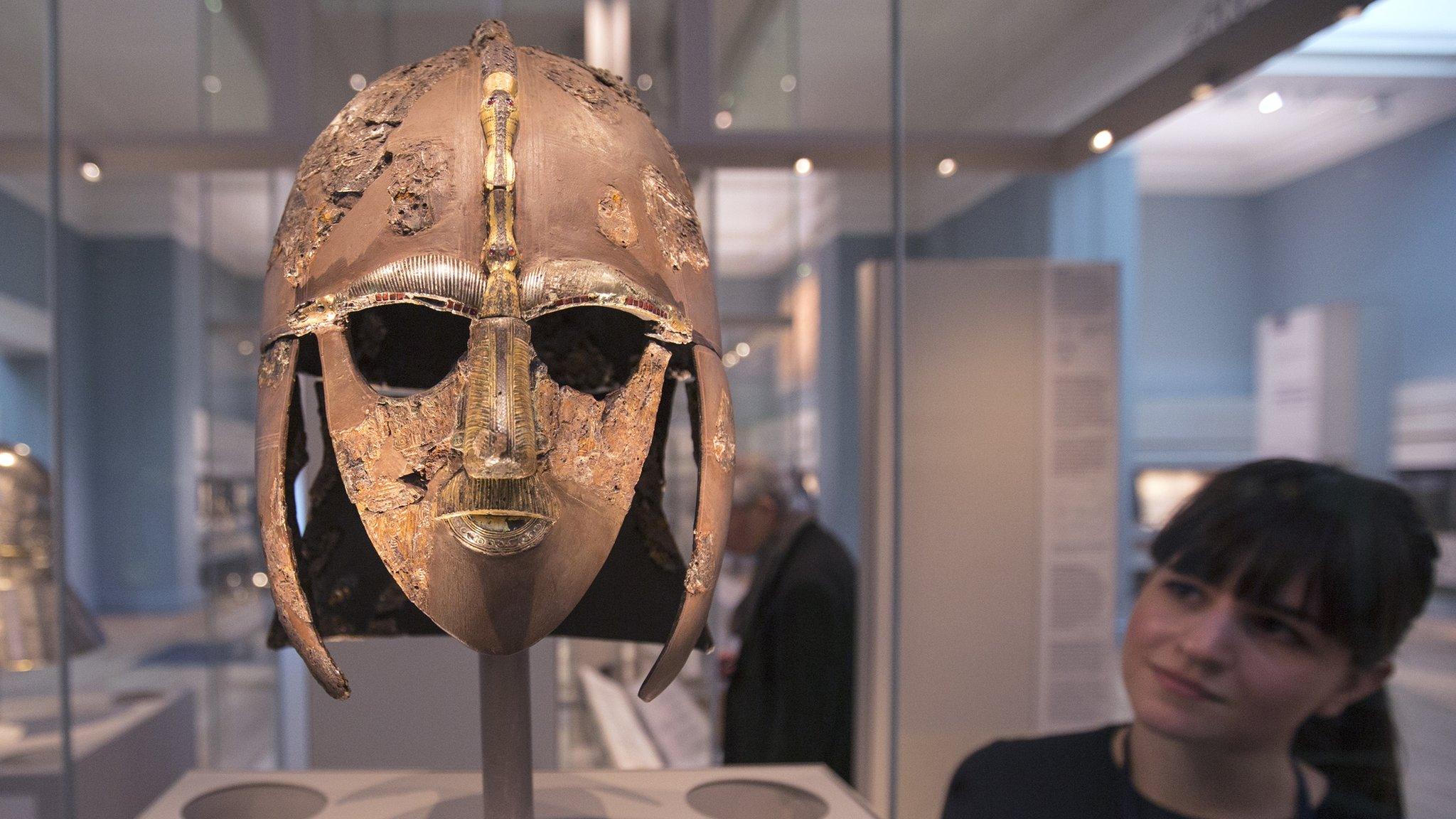
- Published26 July 2014
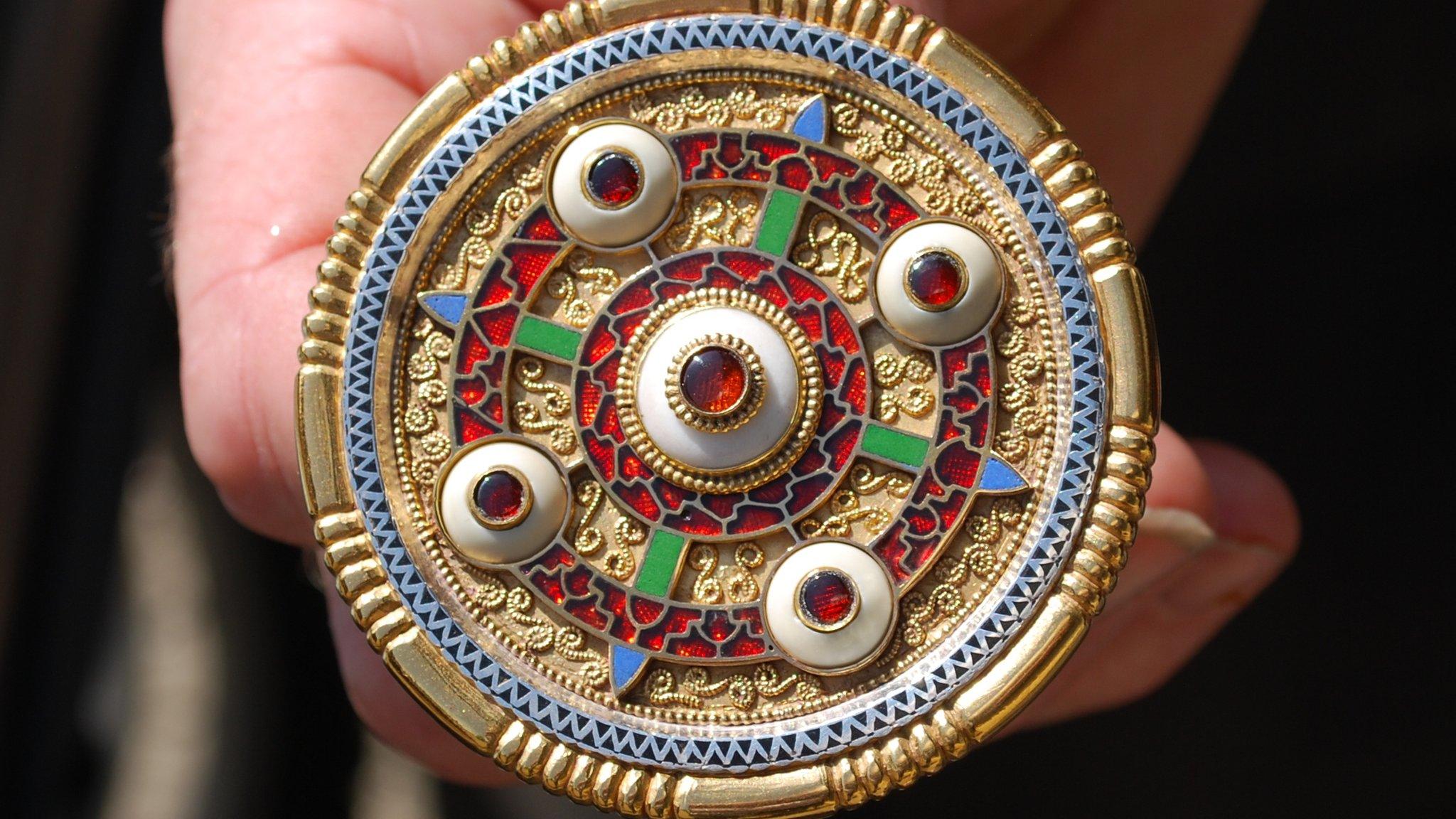
- Published10 March 2014
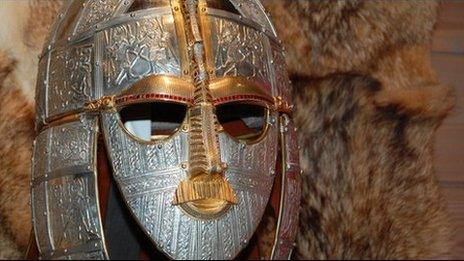
- Published20 January 2013
